The Cockatoo Dwarf Cichlid (Apistogramma cacatuoides) is a stunning and beloved species in the fascinating world of aquariums. Originating from South America, this small fish has captivated fish enthusiasts worldwide with its unique look and captivating habits. Join us on a voyage into the captivating world of the Cockatoo Dwarf Cichlid and discover the enchanting wonders that make it a precious gem in the aquatic realm.
Table of Contents
Hailing from the Cichlidae family, Apistogramma cacatuoides is a close relative of other popular dwarf cichlids like the Ram Cichlid and the Kribensis. Its scientific name pays homage to its distinctive cockatoo-like appearance, with a prominent forehead and a slightly curved mouth. In the aquarium trade, this charming fish is also known as the Cockatoo Cichlid, Cockatoo Dwarf Cichlid, or simply “Cacatuoides.”
What makes the Cockatoo Dwarf Cichlid truly interesting is its captivating behavior and social dynamics. These fish are bottom-dwellers, preferring to explore the lower regions of the aquarium where they can forage for food and establish their territories. They exhibit a remarkable level of intelligence and curiosity, often interacting with their surroundings and tank mates in fascinating ways.
When it comes to habitat preferences, the Cockatoo Dwarf Cichlid thrives in the slow-moving tributaries and streams of the Amazon River basin. They prefer slightly acidic water with a pH range of 6.0 to 7.5 and a temperature between 72°F and 82°F (22°C to 28°C). To recreate their natural environment, aquarists often incorporate driftwood, rocks, and lush vegetation in the aquarium, providing ample hiding spots and territories for these diminutive cichlids.
Despite their small size, typically reaching only 2 to 3 inches (5 to 8 cm) in length, Cockatoo Dwarf Cichlids have big personalities. Males, in particular, are known for their territorial nature and will fiercely defend their chosen patch of the aquarium. However, with proper tank mates and ample space, they can coexist peacefully with other peaceful community fish.
When selecting tank mates for Cockatoo Dwarf Cichlids, it’s essential to consider their size and temperament. Ideal companions include other peaceful dwarf cichlids, tetras, rasboras, and small catfish. Avoid larger, aggressive fish that may bully or outcompete the Cockatoo Dwarf Cichlids for food and territory.
In terms of diet, Cockatoo Dwarf Cichlids are omnivorous and appreciate a varied menu. They readily accept high-quality flake or pellet food as a staple but also relish live or frozen foods such as brine shrimp, daphnia, and bloodworms. Providing a balanced diet ensures optimal health and vibrant coloration.
One fascinating aspect of Cockatoo Dwarf Cichlid behavior is their breeding habits. These fish form monogamous pairs and engage in elaborate courtship rituals. The female lays her eggs on a flat surface, often a rock or a piece of driftwood, while the male fertilizes them externally. Both parents take an active role in caring for the eggs and fry, showcasing a remarkable level of parental dedication.
As we unravel the secrets of the Cockatoo Dwarf Cichlid, it’s evident that this species is a true gem in the aquarium world. With their captivating appearance, fascinating behavior, and manageable size, they make an excellent addition to any well-planned community tank. By providing them with a suitable habitat, appropriate tank mates, and a balanced diet, aquarists can enjoy the beauty and charm of these remarkable dwarf cichlids for years to come.
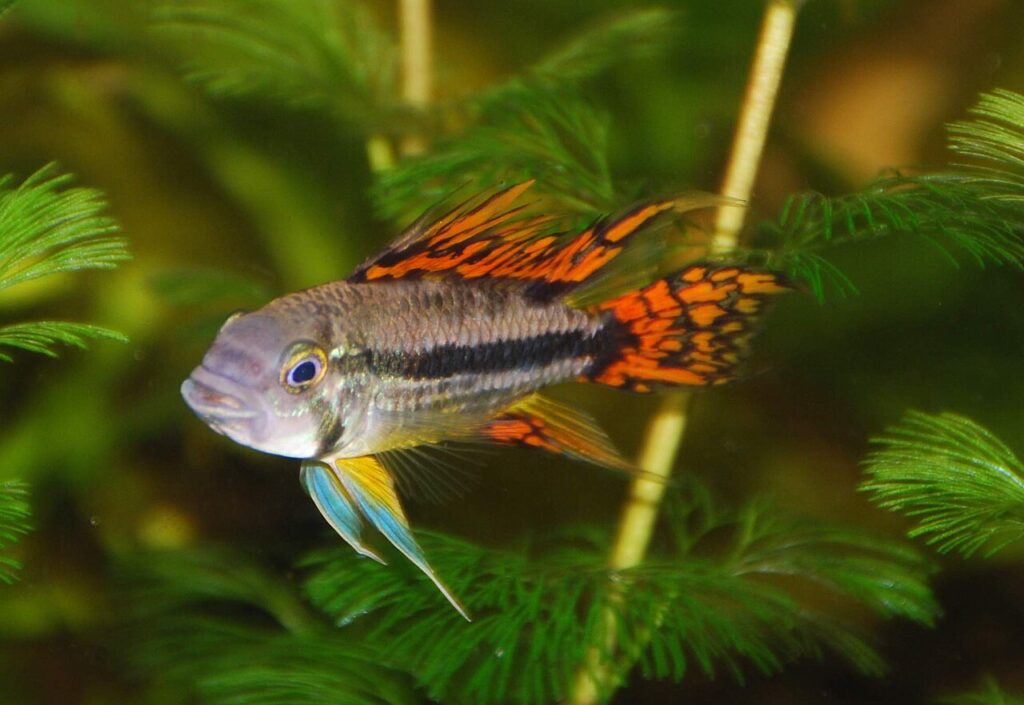
Key Information
The Cockatoo Dwarf Cichlid is a vibrant and captivating species that adds a splash of color to any aquarium. Males display a stunning combination of yellow, orange, and red hues, with iridescent blue speckles on their fins. Females, while less flamboyant, showcase a more subtle beauty with their golden-yellow base color and dark lateral spot. The species’ distinctive cockatoo-like appearance, with a prominent forehead and slightly curved mouth, adds to its unique charm.
| Family | Cichlidae |
| Origin | Amazon River basin in South America |
| Price | $5 to $15 per fish, depending on size and availability |
| Common Names | Cockatoo Dwarf Cichlid, Cockatoo Cichlid, Cacatuoides |
| Variants | Several color morphs, including “Double Red” and “Orange Flash” |
| Ideal Tank Size | 20 gallons (75 liters) or larger |
| Water Parameters | pH 6.0-7.5, temperature 72-82°F (22-28°C) |
| Lifespan | 3 to 5 years |
| Full Size | 2 to 3 inches (5 to 8 cm) |
| Natural Environment | Slow-moving tributaries and streams of the Amazon River basin |
| Behavior | Bottom-dwellers, territorial, intelligent, and curious |
| Habitat Preference | Heavily planted tanks with driftwood, rocks, and hiding spots |
| Aquarium Decoration | Driftwood, rocks, and lush vegetation to mimic natural habitat |
| Ideal Tank Mates | Peaceful dwarf cichlids, tetras, rasboras, and small catfish |
| Fish to Avoid | Larger, aggressive fish that may bully or outcompete them |
| Best Foods/Diet | Omnivorous; high-quality flakes/pellets, live/frozen foods (brine shrimp, daphnia, etc.) |
| Disease | Susceptible to common aquarium diseases if water quality is poor |
| Sex-Switch | No, they do not change sex |
| Gender Differences | Males are larger and more colorful; females have a rounded belly when carrying eggs |
| Care Level | Moderate; suitable for intermediate aquarists |
| Breeding Level | Moderate; forms monogamous pairs and engages in elaborate courtship rituals |
Ideal Tank Mates
It is important to consider the peaceful nature, small size, and specific habitat requirements when choosing companions for Cockatoo Dwarf Cichlids (Apistogramma cacatuoides). The ideal tank mates should have similar water conditions, a non-aggressive nature, and a size that is compatible to ensure a harmonious and thriving aquarium community.
Here are 15 ideal tank mates for Cockatoo Dwarf Cichlids, each with a unique explanation of their compatibility:
1. Neon Tetras (Paracheirodon innesi)
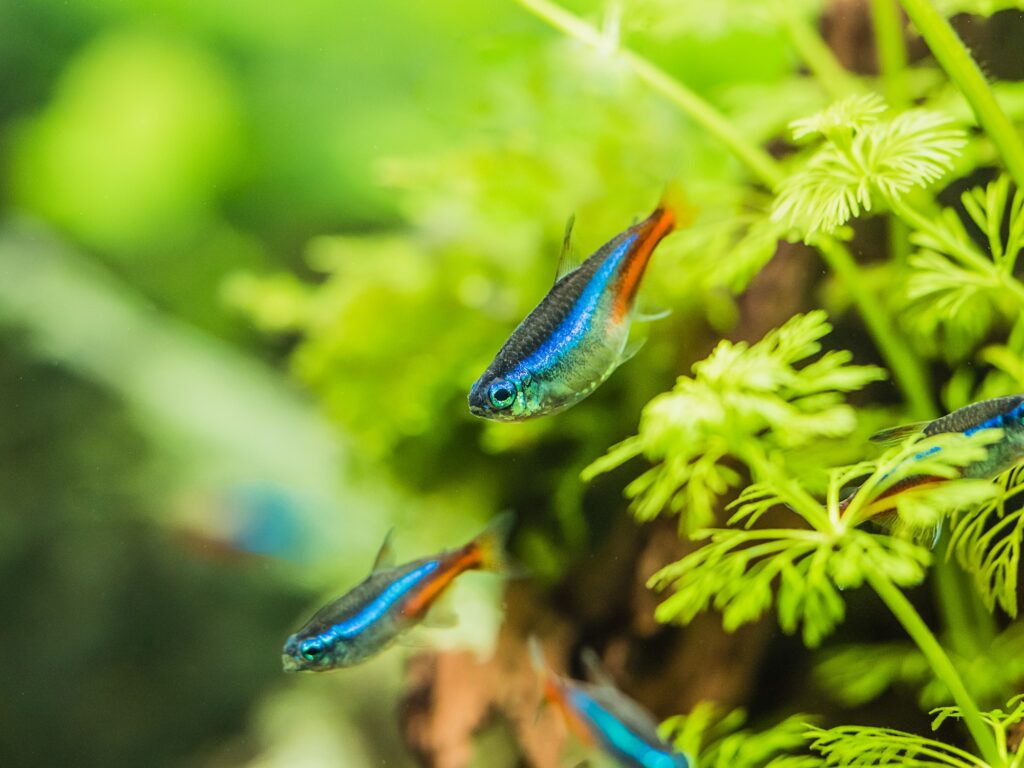
Neon Tetras are a classic choice for community tanks, and their peaceful nature and small size make them excellent companions for Cockatoo Dwarf Cichlids. These colorful fish occupy the mid to upper levels of the aquarium, providing a beautiful contrast to the bottom-dwelling cichlids. Neon Tetras are also schooling fish, adding a dynamic and visually appealing element to the tank.
2. Cherry Barbs (Puntius titteya)
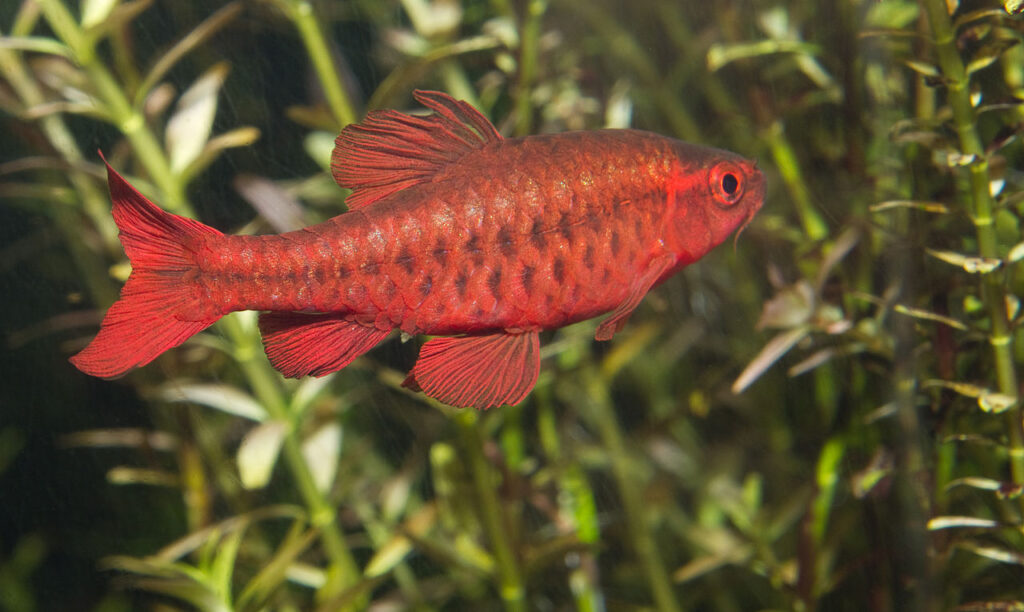
Cherry Barbs are another peaceful and colorful addition to a Cockatoo Dwarf Cichlid tank. These active swimmers have a vibrant red coloration that complements the more subtle hues of the cichlids. Cherry Barbs prefer a planted aquarium, which aligns perfectly with the natural habitat requirements of Cockatoo Dwarf Cichlids.
3. Pygmy Corydoras (Corydoras pygmaeus)
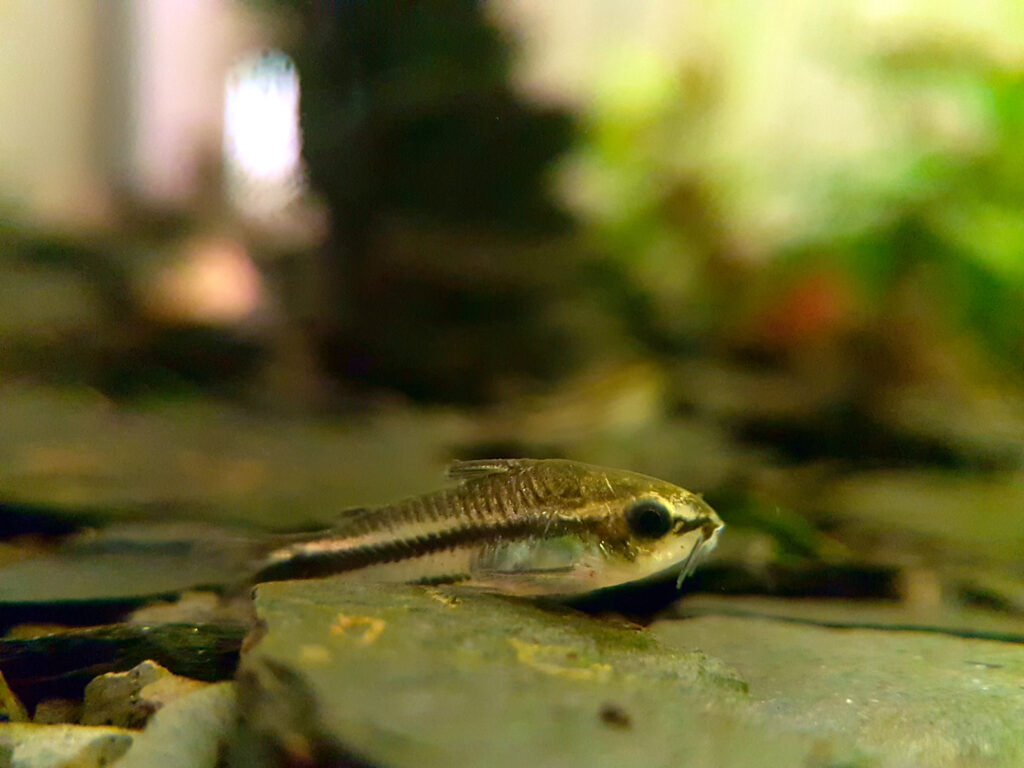
Pygmy Corydoras are diminutive bottom-dwellers that make fantastic tank mates for Cockatoo Dwarf Cichlids. These tiny catfish are peaceful, active, and entertaining to watch as they scavenge for food along the substrate. Their presence helps maintain a clean aquarium environment, and their social nature adds a delightful dynamic to the tank.
4. Harlequin Rasboras (Trigonostigma heteromorpha)
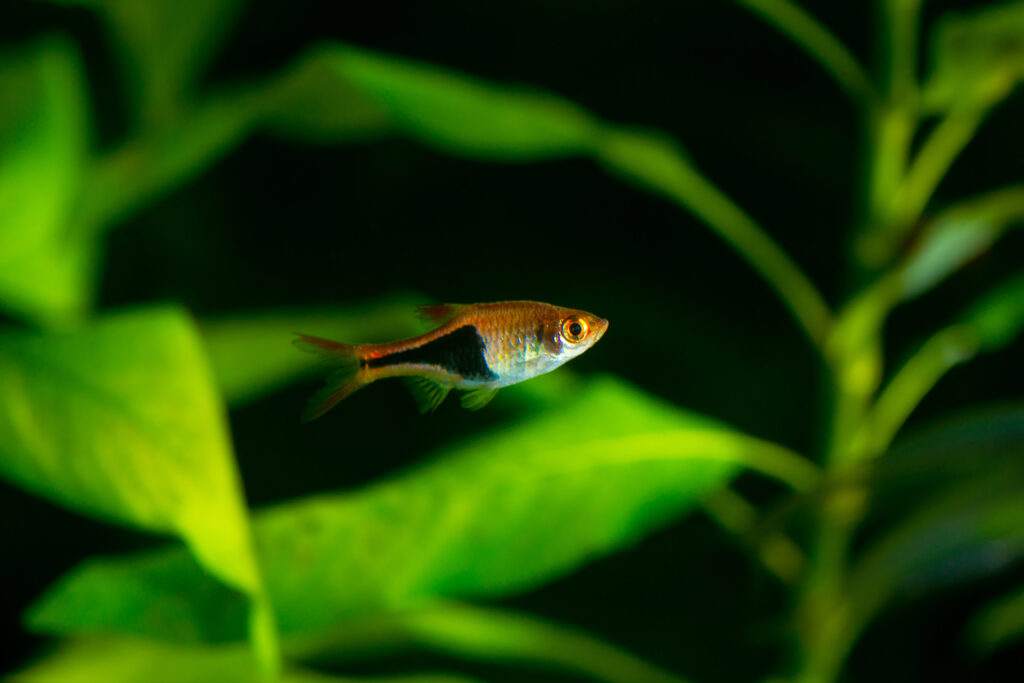
Harlequin Rasboras are stunning schooling fish that thrive in the same water conditions as Cockatoo Dwarf Cichlids. These elegant fish have a unique triangular shape and a striking copper and black coloration. Harlequin Rasboras occupy the mid to upper levels of the aquarium, creating a captivating display as they swim in unison.
5. Otocinclus Catfish (Otocinclus spp.)
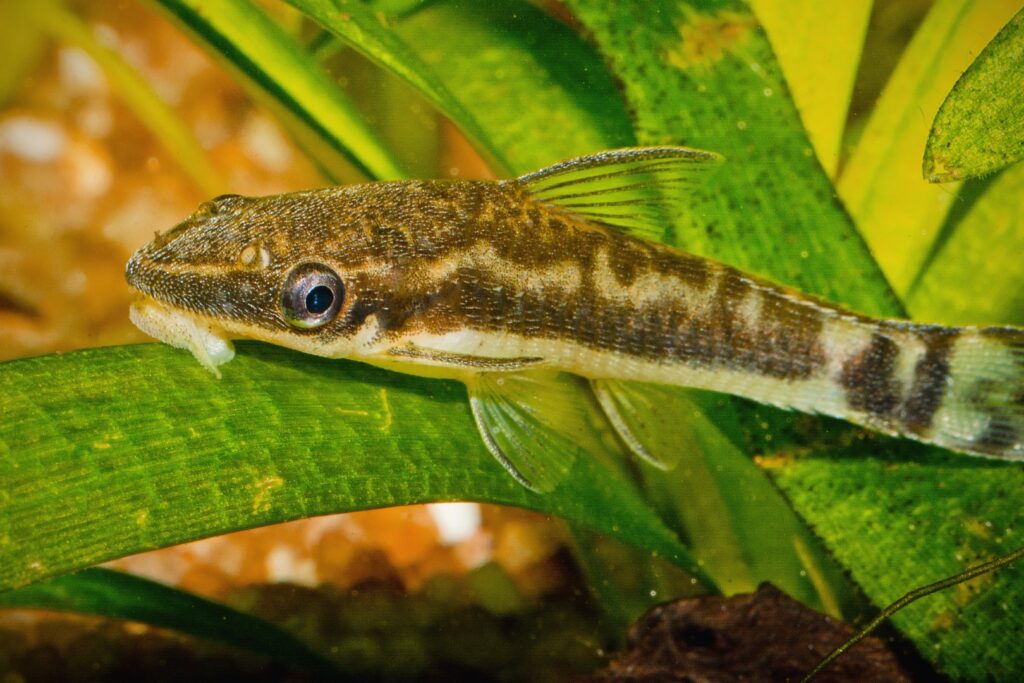
Otocinclus Catfish, affectionately known as “Otos,” are small algae-eating catfish that make excellent tank mates for Cockatoo Dwarf Cichlids. These peaceful and hardworking fish help keep the aquarium clean by grazing on algae growth. Otos are also known for their cute appearance and entertaining behavior, adding a charming presence to the tank.
6. Ember Tetras (Hyphessobrycon amandae)
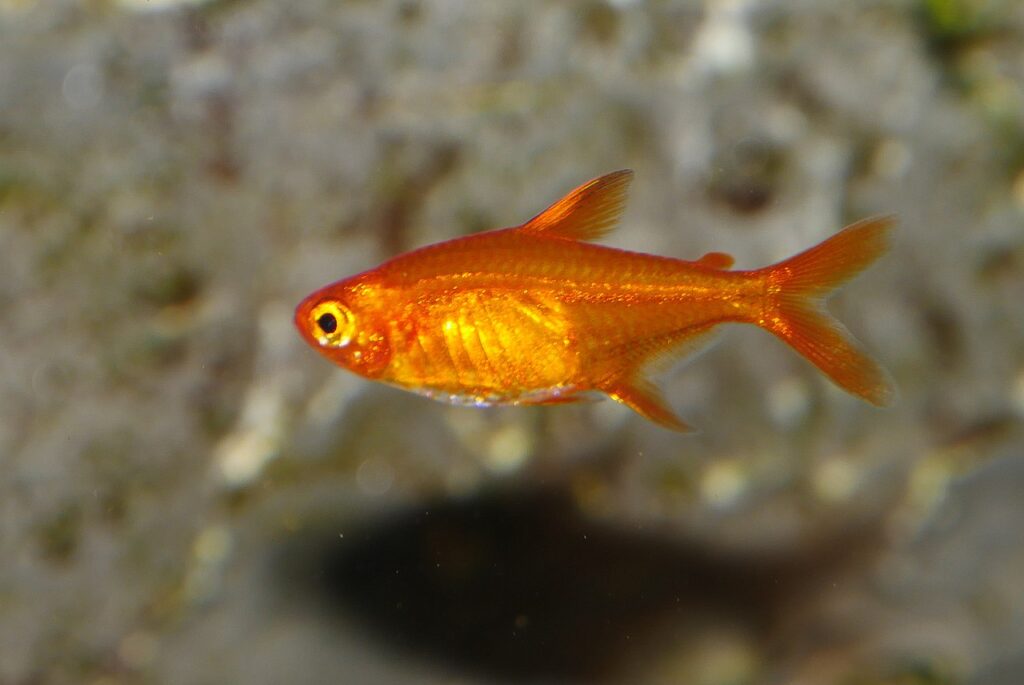
Ember Tetras are tiny, fiery-colored fish that bring a vibrant splash of color to the aquarium. These peaceful schooling fish have a pleasant temperament and are well-suited to the calm nature of Cockatoo Dwarf Cichlids. Ember Tetras prefer a densely planted aquarium, creating a visually appealing and natural environment for both species.
7. Kuhli Loaches (Pangio kuhlii)
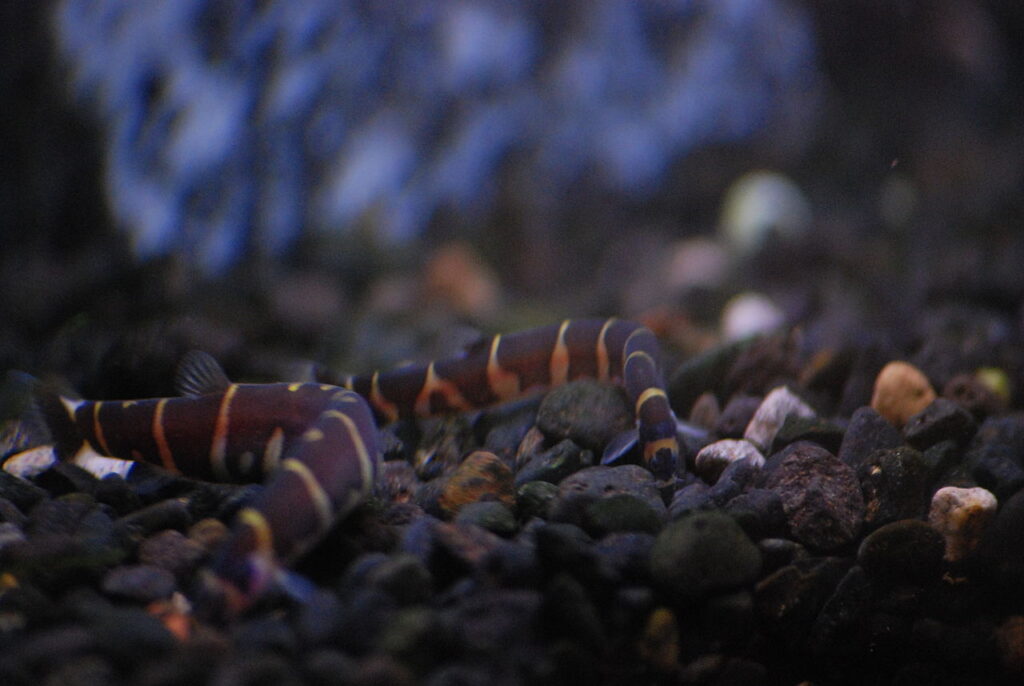
Kuhli Loaches are unique, eel-like fish that make fascinating tank mates for Cockatoo Dwarf Cichlids. These nocturnal bottom-dwellers have a peaceful disposition and are known for their entertaining behavior, often hiding in crevices or plants during the day. Kuhli Loaches help keep the substrate clean and add an interesting dynamic to the tank.
8. Endler’s Livebearers (Poecilia wingei)
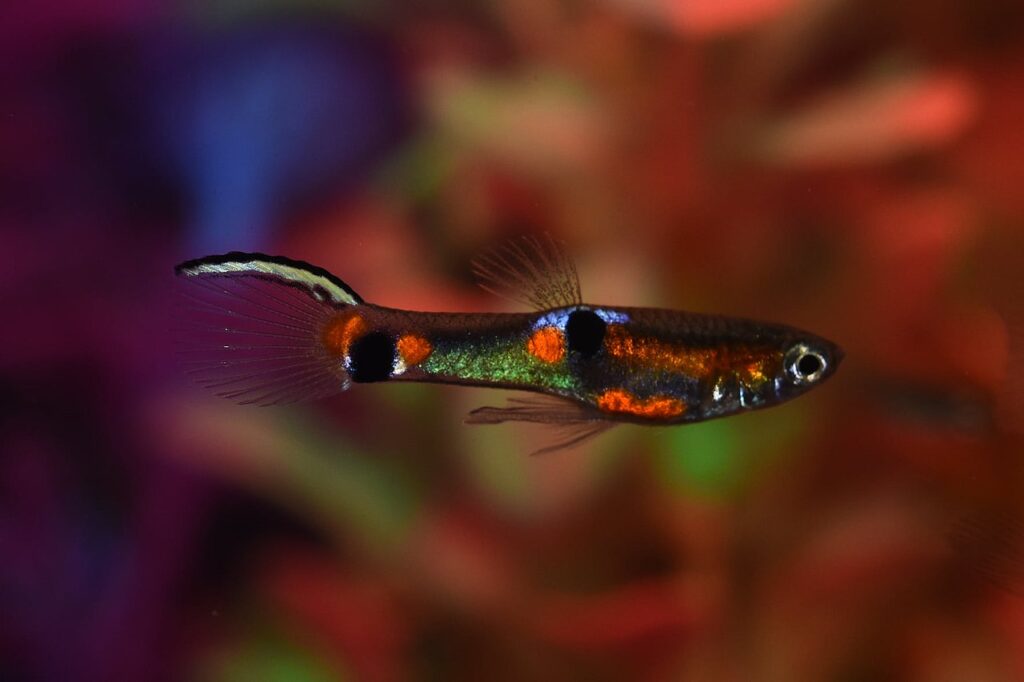
Endler’s Livebearers are small, colorful fish that add a vibrant and lively presence to the aquarium. These peaceful fish are well-suited to the calm nature of Cockatoo Dwarf Cichlids and thrive in similar water conditions. Endler’s Livebearers are active swimmers and make a beautiful addition to a planted tank.
9. Celestial Pearl Danios (Danio margaritatus)
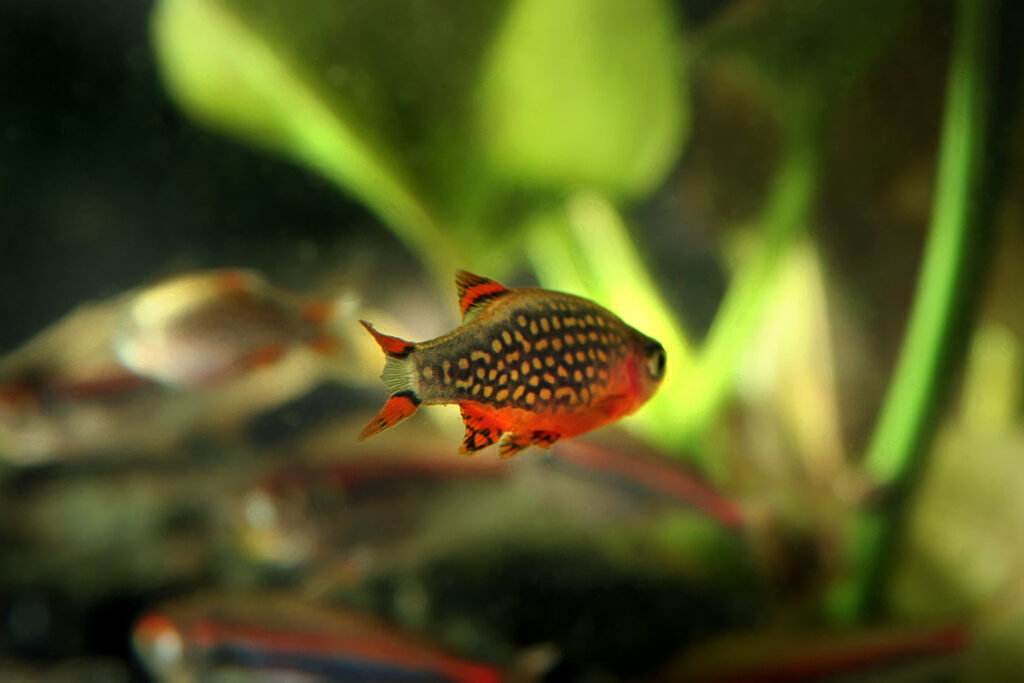
Celestial Pearl Danios, also known as Galaxy Rasboras, are stunning nano fish with a peaceful temperament. These tiny fish have a captivating appearance, with a dark body adorned with pearlescent spots. Celestial Pearl Danios occupy the mid to upper levels of the aquarium and make excellent tank mates for Cockatoo Dwarf Cichlids.
10. Dwarf Corydoras (Corydoras hastatus)
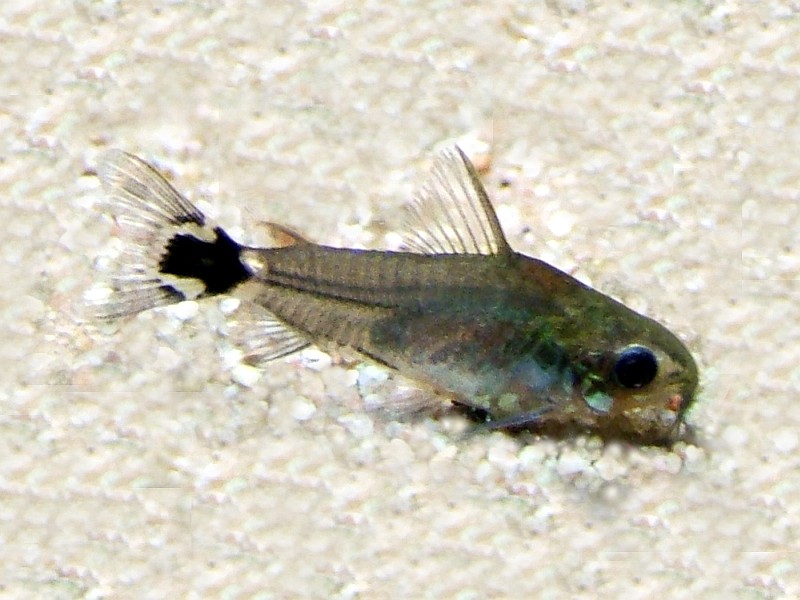
Dwarf Corydoras are another species of miniature catfish that make ideal tank mates for Cockatoo Dwarf Cichlids. These peaceful bottom-dwellers have an endearing appearance and are known for their active and social behavior. Dwarf Corydoras help maintain a clean substrate and add a delightful presence to the tank.
11. Chili Rasboras (Boraras brigittae)
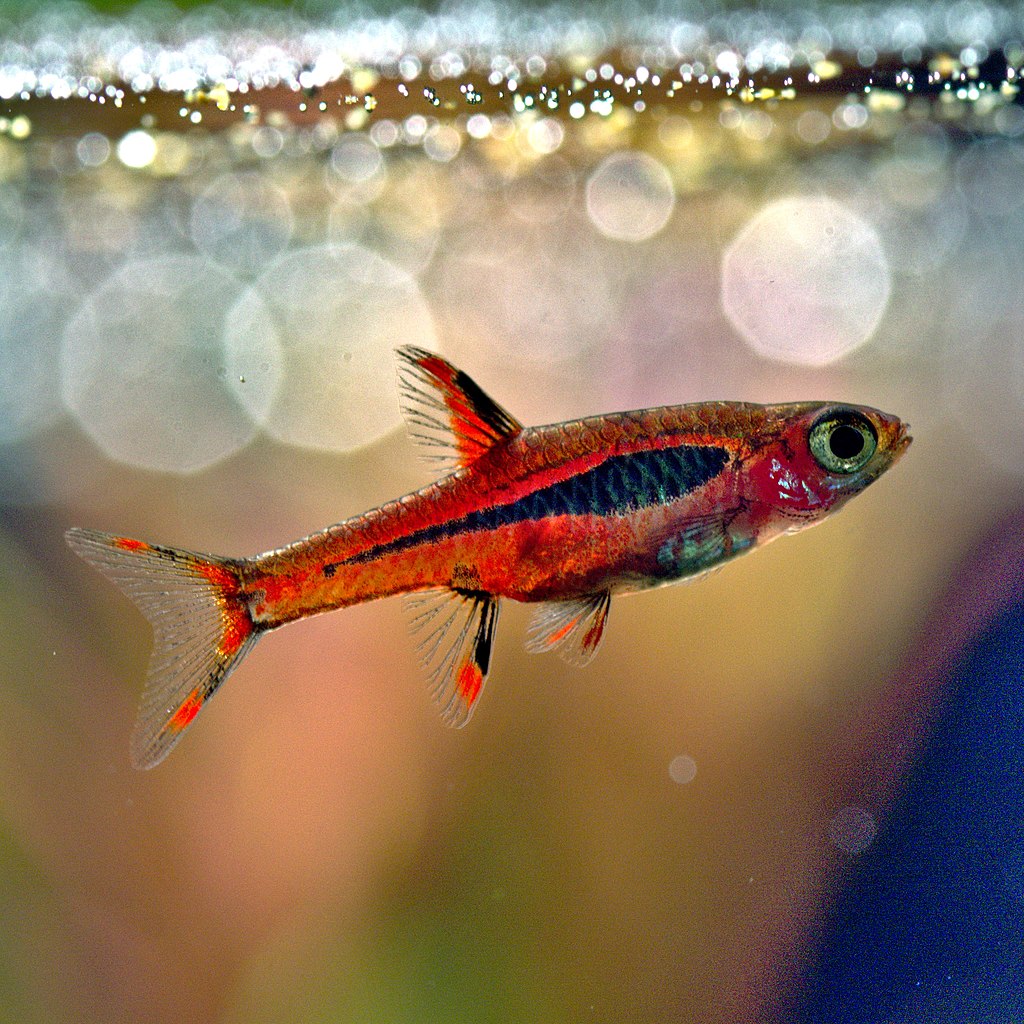
Chili Rasboras are diminutive, red-colored fish that bring a vibrant and lively energy to the aquarium. These peaceful nano fish thrive in the same water conditions as Cockatoo Dwarf Cichlids and make excellent companions. Chili Rasboras prefer a heavily planted tank, creating a visually stunning and natural environment.
12. Dwarf Pencilfish (Nannostomus marginatus)
Dwarf Pencilfish are slender, elegant fish with a peaceful disposition. These small schooling fish have a unique elongated shape and a striking pattern of horizontal stripes. Dwarf Pencilfish occupy the mid to upper levels of the aquarium and make excellent tank mates for Cockatoo Dwarf Cichlids.
13. Pygmy Hatchetfish (Carnegiella myersi)
Pygmy Hatchetfish are unusual and captivating top-dwelling fish that make interesting tank mates for Cockatoo Dwarf Cichlids. These small fish have a unique shape, resembling a hatchet, and are known for their ability to jump out of the water to catch prey. Pygmy Hatchetfish add a fascinating dynamic to the upper levels of the aquarium.
14. Spotted Blue-Eye Rainbowfish (Pseudomugil gertrudae)
Spotted Blue-Eye Rainbowfish are small, colorful fish that make excellent tank mates for Cockatoo Dwarf Cichlids. These peaceful fish have a stunning blue and yellow coloration and are active swimmers. Spotted Blue-Eye Rainbowfish prefer a well-planted aquarium and thrive in the same water conditions as the cichlids.
15. Dwarf Neon Rainbowfish (Melanotaenia praecox)
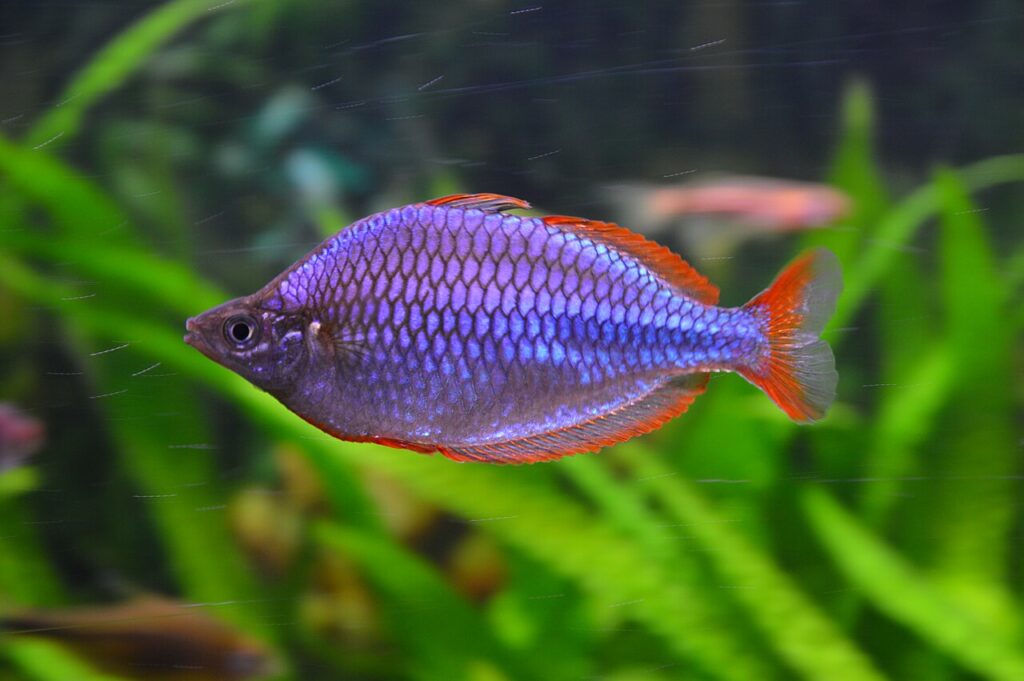
Dwarf Neon Rainbowfish are vibrant and active fish that add a beautiful splash of color to the aquarium. These peaceful schooling fish have a striking blue and red coloration and make excellent companions for Cockatoo Dwarf Cichlids. Dwarf Neon Rainbowfish occupy the mid to upper levels of the tank and thrive in a planted environment.
FAQs
How many Cockatoo Dwarf Cichlids can I keep in my aquarium?
As a general rule, a pair of Cockatoo Dwarf Cichlids can be kept in a 20-gallon (75-liter) aquarium. If you want to keep multiple pairs or a group of females, a larger tank of at least 30 gallons (113 liters) is recommended to provide ample space and minimize territorial disputes.
Are Cockatoo Dwarf Cichlids suitable for planted tanks?
Absolutely! Cockatoo Dwarf Cichlids thrive in heavily planted aquariums that mimic their natural habitat. Plants provide hiding spots, territory boundaries, and a more natural environment for these cichlids. Just be sure to choose hardy, low-light plants that can withstand occasional nibbling.
How often should I feed my Cockatoo Dwarf Cichlids?
Feed your Cockatoo Dwarf Cichlids small amounts of food 2 to 3 times a day. Offer a variety of high-quality flakes, pellets, and frozen or live foods to ensure a balanced diet. Avoid overfeeding, as excess food can lead to poor water quality and health issues.
Can I keep Cockatoo Dwarf Cichlids with shrimp or snails?
While Cockatoo Dwarf Cichlids are generally peaceful, they may view small shrimp and snails as prey. If you want to keep shrimp or snails in the same tank, provide plenty of hiding spots and monitor their interactions closely. Some aquarists have success keeping larger shrimp species like Amano shrimp with these cichlids.
How can I encourage breeding in Cockatoo Dwarf Cichlids?
To encourage breeding, provide a clean and well-maintained aquarium with stable water parameters. Offer a variety of flat surfaces like rocks or small caves for the female to lay her eggs. Condition the breeding pair with high-quality live or frozen foods. Once spawning occurs, the parents will typically care for the eggs and fry.
How do I know if my Cockatoo Dwarf Cichlids are male or female?
Male Cockatoo Dwarf Cichlids are generally larger and more colorful than females. They have elongated dorsal and anal fins and a more pointed head shape. Females are smaller, less colorful, and have a more rounded body shape, especially when carrying eggs.
Can I keep different Apistogramma species together?
While it is possible to keep different Apistogramma species together, it is generally not recommended. Different species may hybridize, leading to undesirable offspring. Additionally, some species may be more aggressive than others, leading to territorial disputes. It’s best to keep each species in a separate tank or with compatible tank mates.
How long do Cockatoo Dwarf Cichlids live?
With proper care and a well-maintained aquarium, Cockatoo Dwarf Cichlids can live between 3 to 5 years. Providing excellent water quality, a balanced diet, and a stress-free environment will help ensure your cichlids live a healthy and long life.
Are Cockatoo Dwarf Cichlids sensitive to water changes?
Like most fish, Cockatoo Dwarf Cichlids can be sensitive to sudden changes in water parameters. When performing water changes, be sure to use a water conditioner to remove harmful chemicals and match the temperature and pH of the new water to the existing tank water. Gradual and consistent water changes of 10-15% per week are recommended to maintain stable water quality.